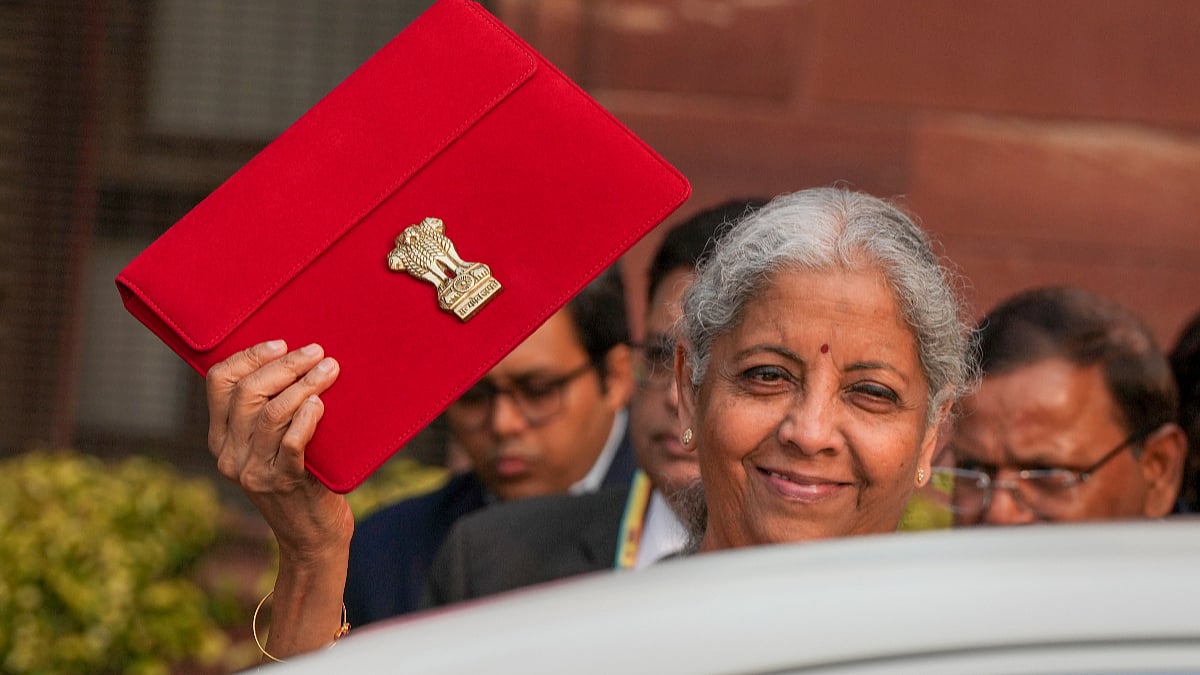From Rs 7 lakh to Rs 12 lakh, it is indeed a giant leap for middle class taxpayers who do not want to avail themselves of deductions and exemptions in their income tax returns for the AY 25-26. And for those not willing to forego these deductions and exemptions, as well as those earning more than Rs 12 lakh, the realignment of tax slabs spells a substantial reduction in their income tax burden.
Together, with these twin measures, intuitively, the entire middle class has been left off the tax hook. Senior citizens who are left to fend for themselves with pension and interest on deposits normally don’t like to avail themselves of the tax benefits linked to investments or saving schemes. For them, the liberalised ceiling of Rs 12 lac is a manna from heaven.
The middle class’s long-standing grievance has been that it has been made to contribute to the national exchequer disproportionately. While the rich can take taxes, both direct and indirect, in their stride, they have all along been let off with just a slap on their wrists. Wealth tax, which targeted them, was abolished in 2015 on the irrational ground that the cost of collection outweighed the revenue therefrom, little realising that the tax was not on all the assets comprehensively, with the notable exclusions being bank deposits and shares.
Estate duty remains in a suspended animation since 1985 on the even more specious and irrational ground that sometimes the legal heirs had to dispose of their inherited properties to pay off the duty. That sorry state of affairs continues even after the 2025 budget was presented on Saturday. The poor of late have been piled with freebies and sops, many of them deservedly, though given the fact that at the end of the day they must indeed be targeted only at the poor.
That, however, left the middle class becoming the beast of burden. At last, their anguished prayers have been answered in a substantial measure. The fact that there was no one to take up cudgels for them made their frustration all the more acute. Corporates and industrialists have chambers of commerce to lobby for them and for the poor, the politicians with an eye on their votes.
The bottom line of the 2025 budget generosity to the middle class is more money in their purses and banks to fulfil their aspirations as well as to splurge. Automobiles would sell more resultantly. So would the white goods like refrigerators, air conditioners, washing machines, dishwashers, and what have you.
Jewellers, too, can be expected to do roaring business, thanks to the yellow metal holding out appeal as much to women as to the menfolk who see in its lustre their future — insulation against erosion of savings, thanks to the ravages of inflation. Gold, indeed, has always come to the rescue of families during times of distress, as well as during inflationary spells, so much so that Europeans by and large set store by both the yellow metal and silver.
The Indian middle class now would join the bandwagon with greater appetite and resolve. Investment in gold coins and biscuits would see a rapid increase. Jewellery is not an unalloyed hedge against the ravages of inflation in as much as invariably it is a mixture of gold and other inferior metals to make it malleable. While selling, a housewife is miffed and disappointed when the wily jeweller fobs her off with deductions ranging from 10% to 20% on the excuse that her jewellery contained wastage to that extent!
The budget for 2025, however, is silent on many aspects and sectors of the economy. While manufacturing may get an impetus from the expectation that the spectre of unsold stocks will not stare at it, no concrete steps have been spelt out to attract fresh investments. That corporates see wisdom in investing their piled-up profits in treasury operations, namely in the share market and the forex market, instead of putting up new facilities, is a sad commentary on their confidence levels.
The day India manufactures substantially for exports, it will be hailed as a manufacturing power like China, South Korea and Japan. Even our cell phone factories are only assembly plants for iconic foreign brands like iPhone and Samsung.
A word about the politics of the budget. The special announcements for the state of Bihar are allegedly with an eye on the next year’s assembly elections as well as to keep the BJP’s ally, JDU, happy. Again, Delhi is home to a large number of government employees and retired employees, what with Delhi being the national capital. They will not remain impervious to the tax overtures.
One is also likely to get sceptical about the resources needed for this please-all budget. Will there be resource mobilisation efforts like strategic sales of PSUs such as the ITDC or India Tourism Development Corporation either to a single buyer or to multiple buyers? Countries like Colombia have identified hard-to-tax category people by first identifying their visible signs of wealth and prosperity, like swanky cars, palatial houses, and so forth.
These cannot be hidden from the public and authorities’ eyes. On the contrary, their owners love to flaunt them. The tax authorities, now free from gunning after the middle class, should gun after such visible signs of wealth so as to boost tax collections. It is easy to shower tax sops and freebies like confetti but difficult to raise additional resources badly needed both for the sake of horizontal equity and boosting revenues to bankroll welfare schemes.
Sadly, the budget has not displayed the courage needed to bite the bullet and unleash the full range of direct taxes on the superrich, nor ideas to reach out to the hard-to-tax category, who merrily thumb their noses at the taxman.
S Murlidharan is a freelance columnist and writes on economics, business, legal and taxation issues
